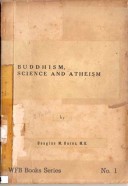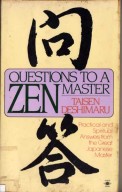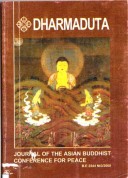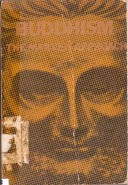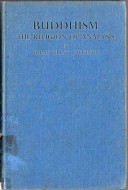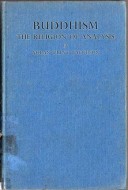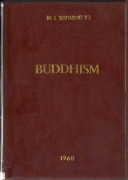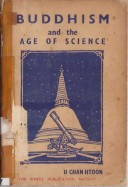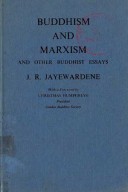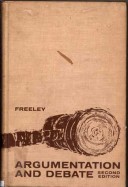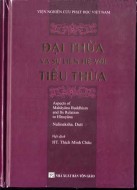MCB: 1210000005554
Sir A. CUNNINGHAM, R. E., K.C.I.E., C.S.I
PREFACE
In 1878, when Dr. Râjendra Lâla Mitra published his work on the Temple of Buddha Gayâ, the only excavations which had then been made were the trenches dug by Major Meade in 1863 at my suggestion, and the subsequent surface clearances by the Burmese. The former had exposed the foundation lines of the original Buddhist Railing, which once surrounded the Temple, while the latter had brought to light several small Temples, besides many votive Stũpas and Buddhist Statues.
I visited Buddha Gayâ in 1879 for the express purpose of seeing what had been done by the Burmese. Their clearances had not been earned deep enough to expose the more ancient monuments which still existed on or near the original level of the ground on which the Temple was built. The clearances also had not been made with any discrimination. Everything was removed as it became exposed ; and thus many of the hemispherical domes of the rows of early votive Stùpas were thrown down. Fortunately they were not carried away, and when the great clearance of the ruins was subsequently made by Mr. Beglar, many of these stone hemispheres were restored to their original Stupas, the remains of which had not been disturbed.
The ruinous state of the Temple at this time was thus described by a correspondent of “the Calcutta Englishman” newspaper:—“I found the Temple in the following condition: ‘‘The whole of the plinth and lower mouldings buried under accumulations of rubbish; the floor of the sanctum, and of the great hall in front 4 feet lower than the level of a rough stone floor laid by the Burmese, who had partially cleared away the heaps of rubbish in front, the great hall roofless ; the half-hall, or porch of the second storey, roofless; the whole of the front of the Temple above the level of the third chamber fallen, disclosing a great triangular gap, about 20 feet high and 12 feet wide at base ; the stairs leading up from lowest floor, or ground floor or terrace, from which the tower springs, roofless; the whole of the facade of the platform to the East a mound of ruins; the whole south facade of platform ruinous, but retaining here and there portions of original work; the entire West face of the platform of the Temple buried under rubbish, which itself was held up by a revetment wall 32 feet high of plain brick and mortar, unplastered, and looking for all the world like a dilapidated jail wall. The holy tree at the apex of series of a circle of steps, which stood on the rubbish so held up by the revetment aforesaid, and the entire” north wall above the then ground level a plain blank wall of mud and brickbats, which was even then leaning outwards. A massive new well-plastered staircase [is] stuck on the East front or main facade at its north-east angle to give’ access to the terrace of the round [square] proper, and to the holy tree—– The entire. West face of main tower peeled off, including the half of the upper pinnacle, the rest of pinnacle overhanging. The entire North face of tower, except the upper portion, peeled off; the East face in fair order above the great triangular gap already noticed; the South face in fairish order, the terrace or platform extensively cracked in all directions, the corbelled work in the third chamber interior, overhanging in a most dangerous condition, the chamber at the same time being “inaccessible.”
Such was the state of the Great Buddhist Temple in 1880, when Sir Ashley Eden, the Lieut.-Governor of Bengal, appointed Mr. J. D. Beglar to make a thorough repair of the whole building. The work was begun during the course of the year with a further clearance of the accumulated rubbish, which had become absolutely necessary, as every year the interior of the Temple was turned into a small tank by the catchment of rain water from the outside. During this clearance the different additions made to the outside were revealed. At the same time the interior pavement, which had become very uneven, was taken up to be relaid; and this work brought to light the numerous alterations which had been made at different times to the inside of the Temple.
In February 1881 I paid another visit to the Temple, and I was present when the discovery of Relies was made under the front of the Vajrâsan Throne. As the discoveries that were made during these excavations are described in detail in the following pages, I will here only state the principal conclusions which I was constrained to adopt on their evidence.
- C. 250.—The first, and perhaps the most interesting, discovery was the remains of the original Temple of Asoka, with the polished Vajrasan Throne, exactly as portrayed in the Bharhut Basrelief with the view of the Bodhi Tree of Sâkya-muni. Close by, on the north side of the Temple, was found the remains of the cloistered walk, with its 22 pillared bases still in situ, each marked with a letter of the Indian alphabet of Asoka from a to the cerebral t. One shaft was also found marked with the Asoka letter a.
But the most important discovery was the fact that the present Temple is built exactly over the remains of Asoka’s Temple, so that the original Vajrâsan Throne stui retains its old position of Buddha’s seat, and the reputed centre of the Universe.
- D. 140—The age of the present Great Temple is shown by the presence of a gold coin of the Indo-Scythian King Huvishka, amongst the Relics deposited in front of the Throne, along with some silver punch-marked coins. The date of Huvishka is now known as covering a large portion of the first half of the 2nd century A. D. The same age is declared by the presence of an Indo-Scythian inscription on the outer Vajrfisan Throne, and also by the discovery of a colossal statue, just outside the Temple, with an Indo-Scythian inscription dated in the year 64, which if referred’ to the Saka Samvat gives A. D. 78+64=142. I formerly thought that there was no Mahâbodhi Temple standing at the time of Fa-Hian’s visit, A. D. 399 to 409; but I now see that his actual words distinctly imply that Temples were then standing at all the four famous sites connected with Buddha’s history. These were– 1. Birthplace ạt Kapila. 2. The Bodhi Tree at Uruvilwa. 3. The Deer-park at Benares 4. Wace of Death at Kusinagara. Fa Hian must therefore have seen the present Temple about one century and a half after its erection.
450 A. D. circa—The early date of the Temple is proved By its straight sides which form a square truncated pyramid, whereas all medieval Temples that I have seen have curved or slightly bulging sides, which give a more graceful form. The entrance Pavilion in front of the Temple, which was seen by Hwen Thsang, and which he describes as an after addition, may perhaps be the work of King Sado, called Thado-Meng in the Burmese inscription. Some repairs must certainly have been made about this time, as we know that the pillared roof of Buddha’s Walk had fallen down before the time of Hwen Thsang, who does not notice it.
About this time also must have occurred the great irruption of sand from the Phalgu River, which filled the whole courtyard of the Temple to a height of 21 feet. To the same period I would refer the sandstone pavement of the interior, which I suppose was a necessary repair owing to the breaking up of the old terraced flooring of Huvishka’s Temple. A great irruption of sand is alluded to by Hwen Thsang, who says, “Since the true Law has become “weakened sand and earth have covered the Adamantine Throne all over, and it is no longer “visible to which he adds that during the last century or two men win go towards the ff Bodhi Tree, as they can no longer see the Adamant Throne.” By this account I understand “that at the time of the Pilgrim’s visit the Vajrâsan Throne outside the Temple under the Bodhi Tree was covered with sand, and consequently men could not pay them devotion to it.
- D. 600—In the beginning of the 7th century the Bodhi Tree was cut down by Raja Sasângka, the great opponent of Buddhism. At the same time the statue of Buddha inside must have been broken, although the pilgrim piously records that it was saved by a stratagem of Purna Varma’s Minister.
- D. 620—The Bodhi Tree was afterwards restored by Raja Pùrna Varma, who surrounded it with a stone wall, about 24 feet high, to prevent it being again cut down. By this account I understand that the Raja placed his new Tree on the top of the basement terrace about 25 feet above the level of the accumulated sand which surrounded the Temple. At the same time I conclude that he must have found the old Vajrâsan stone, which had originally been placed on the broad terraced berm which surrounded the whole building. This Throne would then have been raised on the basement, 31 feet in height, where it was found in 1881, hidden behind the mass of the great central buttress.
- D. 1035 to 1079—The next ascertained event in the history of the Temple is the account of the extensive repairs which were made by the Burmese in the 11th century. The detailed notice of this work is recorded by the Burmese themselves in an inscription dated in A. D. 1079. The earlier date of A. D. 1035 is found on a gilded copper umbrella top, which was the gift of Dharma Raja Guru, the person deputed by the King of Burma to repair the Temple, By the second inscription on a stone slab we learn that as the repairs were not finished by this officer, a second agent was sent in A. D. 1071, who succeeded in making a complete restoration in 7 years and 10 months, having finished thè work in A. D. 1079.
Other repairs were no doubt made in the latter half of the 12th the century by Asoka- balla, Raja of Saparda-laksha, or Sawâlak, just before the Muhammadan conquest in A. D. 1201.
After this time I find no notices of Mahâbodhi. In the chronicles of Mewar mention is made of expeditions in the 13th and 14th centuries for the recovery of Gayâ from the infidels; but these notices refer to Brahma Gayâ of the Brahmanists, and not to the Great Buddhist Temple of Buddha Gayâ. I, however, look upon these expeditions as pious wishes of the Bardic chroniclers.
In the six centuries which followed the Muhammadan conquest during which the Mahâbodhi Temple was quite deserted, it gradually became more and more ruinous. The greater part of the stucco facing had disappeared, and the brick walls, being laid only with clay mortar, had peeled off on all sides, more especially on the West face, where in many places the bricks had fallen away to a depth of nearly 5 feet. But a sufficient number of tolerably well-preserved portions of the mouldings and niches on the other faces still remained to enable the restorer to complete the repair of the whole in the exact pattern of the original. This extensive renewal of the surface was absolutely necessary to ensure the future safety of the building. No new features were added, the restoration being limited to a strict repetition of the existing niches and mouldings.
But the front Pavilion of the Temple was almost a complete ruin ; and at first it did not seem likely that any authority could be found for even its partial renewal. My advice was that the ruined walls should be well plastered with cement simply to prevent further decay. This was actually begun, as I see by one of Mr. Beglar’s photographs. But a short time afterwards a small model in stone of the Temple was found amongst the ruins, from which the whole design of the building as it existed in mediaeval times could be traced with tolerable completeness [See Plate XVI] From this model, and from the still existing remains of the facade, Mr. Beglar designed the front Pavilion as it now stands. On the same authority he designed the four corner Pavilions, which are seen in all the photographs of the restored Temple. This additional work has been much criticised, and I have been roundly abused for it in company with Mr. Beglar, although I had nothing whatever to say to it. At the same time I must confess that, since I have seen it, I think his design of the front Pavilion is a very successful completion of the entrance in the style and spirit of the original work as shown in the model. It is of course a Restoration, which, as it was based on the double authority of existing remains and an ancient model, I consider as legitimate and justifiable.
The importance of the Mahâbodhi Temple for the history of Indian art is quite unique, as it gives us the oldest existing remains of both sculpture and architecture. The sculptures of the Bharhut Stupa date from the flourishing period of the Sunga Dynasty, about B. C. 150, whereas the Mahâbodhi remains belong to the period of Asoka, just one century earlier.
There are two large statues, both alto-relievos, one of a female standing to the front on the corner pillar of Buddha’s Walk, the other of a Yakshini. in a tree, on a corner pillar of the Railing. Of smaller sculptures there are basso-relievos of the famous Jetavano garden scene, of the Indra-sâla cave of the Bodhi Tree, and of the Tri-ratna and Dharma-chakra symbols. The remains of architecture are limited to the Pillars, which show unmistakably their Persepolitan origin, both in their bulbous bases and in their animal capitals.
In Appendix A. I have added some notes on the peculiar construction of the Vaults and Arches of the Temple. As the style is confined to India, it may, very appropriately, be called the Indian Arch.
In Appendix B. I have suggested that the Plan of the Temple must have been formed on a diagram of squares after the usual Indian fashion.
CONTENTS
Preface
I.—Historical Notices
II.—Temple of Asoka
III. —Buddha’s Walk
IV.—Asoka Temple Railing
V.—Inscriptions of Asoka’s Railing
VI.—Great Temple of Mahâbodhi
VII.—Additions and Restorations
VIII.—Bodhi Tree, or Bodhi-druma
IX.—Toran Gateway
X.—Monuments in Courtyard
XI.—Monuments Outside the Walls
XII.—Monastery of Mahâbodhi Sanghârâma.
XIII.—Votive Stũpas
XIV.—Seals with Figures and Inscriptions
XV.—Sculptures
XVI.—Inscriptions, General Review of.
XVII.— Indo-Scythian and Gupta….. A.D. 150- 600
XVIII.— Mediaeval……………………… A.D. 600-1000
XIX.— Chinese……………………………. A.D. 1000-1100
XX.— Burmese……………………………. A.D 1035-1079
XXI.— of Asoka-balla………………….. A.D. 1150-1181
Appendix A.—Arches and Vaults
Appendix B.—Ground Plan of Temple.
 Facebook
Facebook
 Google
Google
 Google+
Google+


